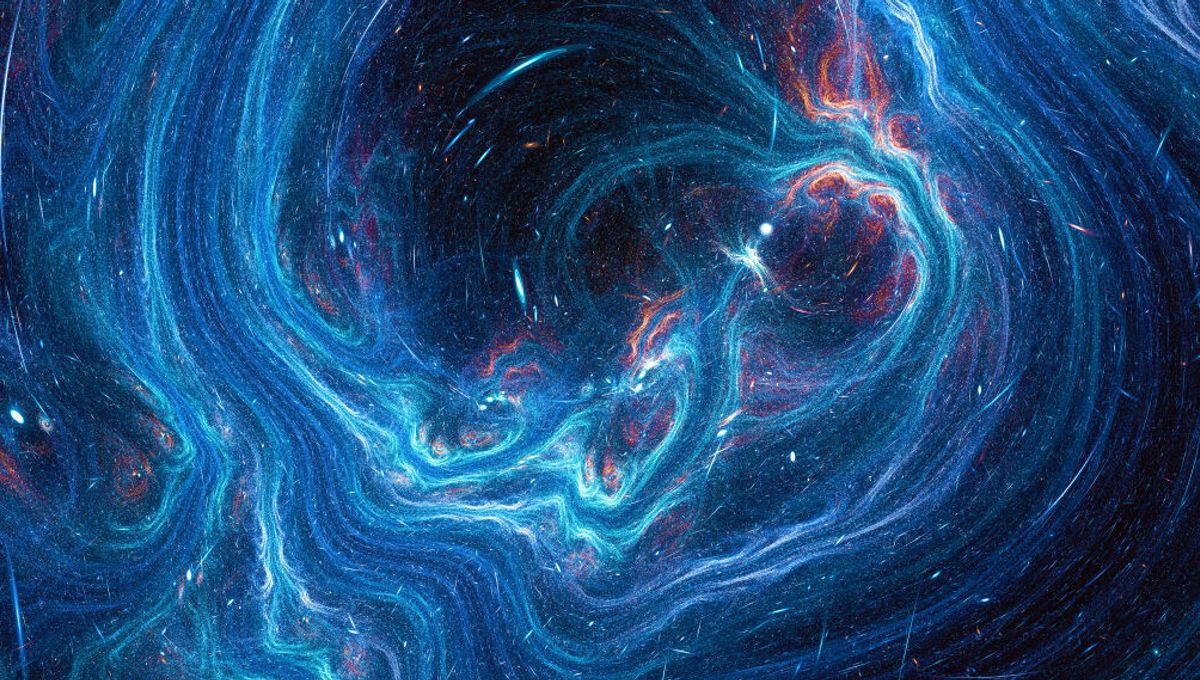
Our current best understanding of the universe requires the existence of an invisible substance known as dark matter. The exact nature of dark matter (or its actual existence) is still unknown, and there are multiple competing theories to explain the effect of this matter on the Universe. An exciting new one is called Recycled Dark Matter.
The idea behind Recycled Dark Matter is that dark matter is produced in a specific mechanism that researchers have dubbed “recycling” in a paper awaiting peer-review, because dark matter forms twice in the universe, with weird quantum mechanics and a black hole phase in the middle. All of that just a few instants after the beginning of the cosmos.
So, let’s take a journey back about 13.8 billion years. You don’t have to move, because the Big Bang happened everywhere. At the very moment that time as we know it starts ticking, the fundamental forces and the building blocks of particles we know of (the Standard Model) are in equilibrium with the Dark Sector (we know it sounds like a bad fantasy novel location, but bear with).
But it takes just a few moments for the universe to expand and cool down, and things are no longer in equilibrium. In this scenario, the dark sector enters a false vacuum, something that looks like a balanced spot. It’s a phenomenon that is completely quantum-mechanical but with big consequences.
Imagine two hills and a valley in the middle. If you make a ball roll down, it will settle at the bottom of the valley, which is its lowest energy state. In quantum mechanics parlance, that is the vacuum state. Now imagine that one of the hills had a little valley halfway between the top and the bottom – the ball might rest there or end up at the very bottom. Both are balanced for us, but in quantum mechanics, this is not the case.
The higher valley is a false vacuum, and things in it might appear to be in equilibrium – until suddenly they are not and end up in the true vacuum. The false vacuum scenario is one of the ways the Universe might end. Now, a team of researchers has considered: if the expansion of the universe pushed the dark sector particles into a false vacuum, what would happen?
In the scenario, these particles would acquire mass and energy, and not many of them would end up in the true vacuum. That minority would be well-behaved particles, and we know they seldom make history. The particles in the false vacuums would actually collapse into primordial black holes, and depending on the mass of these objects, they might evaporate before the first nucleus of an atom formed. That’s about a microsecond after the Big Bang.
And what do these black holes evaporate into? Well, it’s the dark matter that made it all the way to today. So dark matter is recycled through a quantum mechanical process and black holes before getting stuck in what could still exist today. Although, the dark matter produced in this way is the one disfavored by some observations.
A paper describing the results is awaiting peer-review and it is available on the ArXiv.
[h/t: Live Science]
Source Link: Dark Matter Might Be Recycled To Form A Whole Invisible Periodic Table